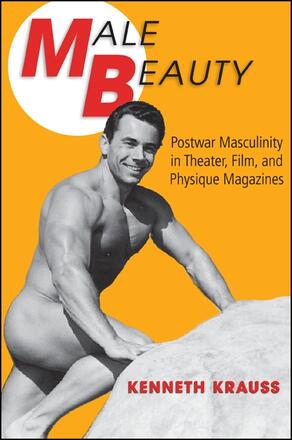
Male Beauty
Postwar Masculinity in Theater, Film, and Physique Magazines
Alternative formats available from:
Explores how a younger and more sensitive form of masculinity emerged in the United States after World War II.
Description
In the decades that followed World War II, Americans searched for and often founds signs of a new masculinity that was younger, sensitive, and sexually ambivalent. Male Beauty examines the theater, film, and magazines of the time in order to illuminate how each one put forward a version of male gendering that deliberately contrasted, and often clashed with, previous constructs. This new postwar masculinity was in large part a product of the war itself. The need to include those males who fought the war as men—many of whom were far younger than what traditional male gender definitions would accept as "manly"—extended the range of what could and should be thought of as masculine. Kenneth Krauss adds to this analysis one of the first in-depth examinations of how males who were sexually attracted to other males discovered this emerging concept of manliness via physique magazines.
Kenneth Krauss is Associate Professor of Drama at The College of Saint Rose. His books include The Drama of Fallen France: Reading la Comédie sans Tickets, also published by SUNY Press.
Reviews
"…Male Beauty offers great biographical and historical details, intriguing rereadings of iconic plays and films, and compelling insights into the idea of male beauty in an era of changing codes of gender and sexuality. " — The Gay & Lesbian Review
"…Krauss did a remarkable amount of work on this volume, and scholars interested in any of the areas on which he focuses should take a look at his research. " — CHOICE
"The transformation of how masculinity was presented and perceived after World War II is at the forefront of analysis in Male Beauty. This definition of what constituted the look and appeal of the male gender broadened to include a younger and more sensitive side of manhood. In a scholarly and personable way, Krauss documents the prime examples of this transition through the early 1960s with over 130 photos. " — RAGE Monthly